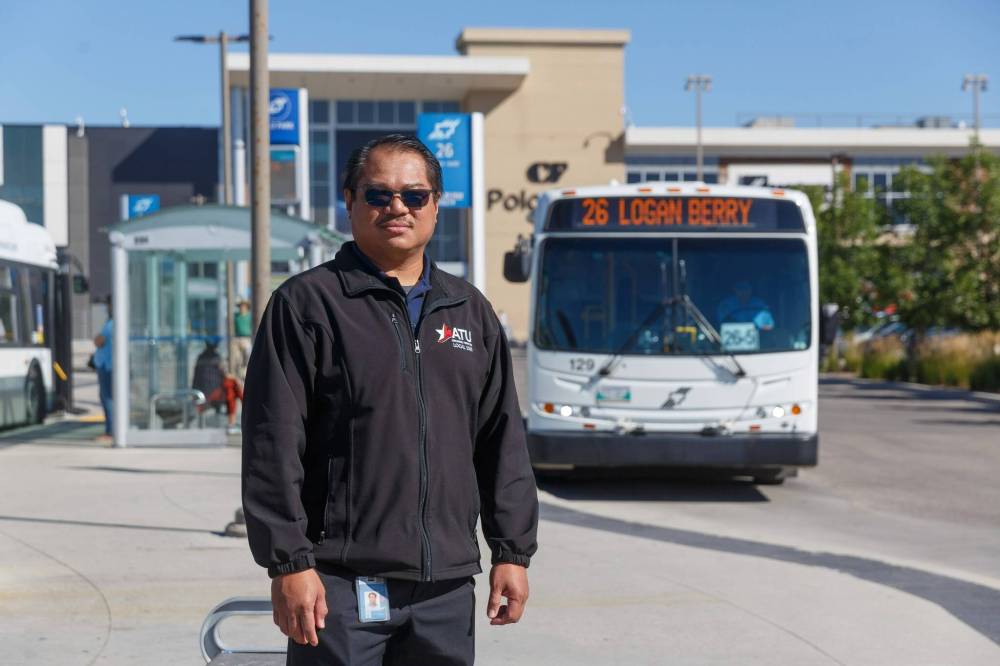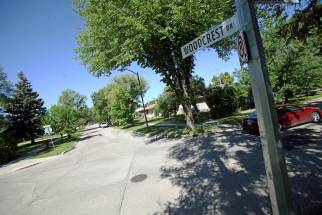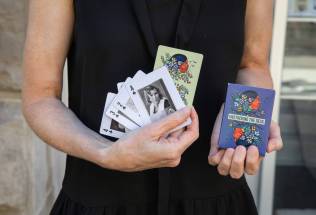Civil service, uncivilized road manners City staff caught by photo-radar, red-light cameras driving carelessly, sometimes dangerously
Read this article for free:
or
Already have an account? Log in here »
To continue reading, please subscribe:
Monthly Digital Subscription
$0 for the first 4 weeks*
- Enjoy unlimited reading on winnipegfreepress.com
- Read the E-Edition, our digital replica newspaper
- Access News Break, our award-winning app
- Play interactive puzzles
*No charge for 4 weeks then price increases to the regular rate of $19.00 plus GST every four weeks. Offer available to new and qualified returning subscribers only. Cancel any time.
Monthly Digital Subscription
$4.75/week*
- Enjoy unlimited reading on winnipegfreepress.com
- Read the E-Edition, our digital replica newspaper
- Access News Break, our award-winning app
- Play interactive puzzles
*Billed as $19 plus GST every four weeks. Cancel any time.
To continue reading, please subscribe:
Add Free Press access to your Brandon Sun subscription for only an additional
$1 for the first 4 weeks*
*Your next subscription payment will increase by $1.00 and you will be charged $16.99 plus GST for four weeks. After four weeks, your payment will increase to $23.99 plus GST every four weeks.
Read unlimited articles for free today:
or
Already have an account? Log in here »
Hey there, time traveller!
This article was published 31/08/2022 (1194 days ago), so information in it may no longer be current.
Going 59 in a school zone, nearly twice the speed limit.
Blasting through an intersection 22 seconds after the light changed from amber to red.
These were two of the most egregious traffic infractions committed by City of Winnipeg staff caught on camera over a three-year-plus span, according to records obtained by the Free Press through a freedom of information request. The data included both photo-radar and red-light camera infractions.
A total of 352 tickets were issued between January 2019 and April 2022 to vehicle operators from multiple city departments, including Winnipeg Transit, public works, the Winnipeg Parking Authority and the Chief Administrative Office. Transit employees racked up $34,110 in fines for about 140 offences. Fine amounts were provided only for the transit department.
The most expensive ticket issued was $429 for the vehicle travelling at 59 km/h in the 30 km/h school zone. It’s not clear whether the driver was a bus operator or another employee, such as a transit inspector or maintenance worker.
The driver with the infraction recorded 22 seconds after the light had turned red was in a vehicle registered with the CAO department, and was the only vehicle attached to that office listed in the data.
Although the Free Press asked specifically for data on whether fines were paid by employees or their departments, that information wasn’t provided.
“The (city’s) fleet management agency explained that they do not track (the outcome of the ticket) as tickets received by them are forwarded to the relevant department and the department decides whether the fee will be paid by the department or the employee,” said Chantel Fehr of the city’s access and privacy office.
“Where the costs of tickets was not included it is because that data is not tracked by the program area for their business purposes,” she added.
City spokesperson Adam Campbell said it’s up to a department to determine whether the ticket should be disputed or not. If it isn’t contested, the department pays and the employee must provide reimbursement. If the employee can’t be identified, the department is out the cost of the fine.
The department head can also “consider the circumstances and waive the requirement for the employee to reimburse the city,” Campbell said.
Romeo Ignacio, president of ATU Local 1505, which represents transit workers, said drivers pay the tickets and are also disciplined.

When asked why bus drivers are speeding and running red lights, Ignacio said it could be due to “rookie mistakes.” About 150 new drivers are hired every year and it takes time to learn routes. In the case of school-zone offences, it could have been an operator unfamiliar with the area, he said, adding drivers face other challenges.
“You may have to choose between (running a red light or) slamming on the brakes and people falling on the floor,” he said. “We shouldn’t be tolerating speeding and running the reds but there are other factors affecting it.”
In addition, drivers may speed because they’re struggling to keep up with busy routes running on schedules altered during the low-traffic pandemic, he said.
Ignacio noted that 140 offences for 1,000-plus drivers is a “tiny statistic” but it’s still not a “good statistic.”
In a statement, the city said the transit schedule is adjusted four times a year based on a variety of metrics, including the on-time performance of each segment of a route. The data is analyzed and run times of individual routes are adjusted as needed.
City spokesperson Megan Benedictson said operators with concerns about time concerns or routes should speak with the city’s scheduling branch or the transit union, which can raise them at committee meetings.
“It is also important to note that operators are trained to always put safety first, not the schedule,” Benedictson said. “Speeding is not permitted at any time.”
“It is also important to note that operators are trained to always put safety first, not the schedule… Speeding is not permitted at any time.” – Megan Benedictson
Fire and paramedic vehicles responding to emergencies are exempt from tickets, but drivers aren’t shielded when they’re not on urgent business. The data shows 16 tickets were handed out for non-emergency infractions. Nearly all were paid for via payroll deduction. Police vehicles are exempt from photo-radar enforcement.
Robin Speer, prairie director for the Canadian Taxpayers Federation, said it’s good that city employees, for the most part, appear to pay their own tickets. In Ottawa, city employees “get a free pass” when running reds or speeding on the job, he said.
However, Speer has concerns about whether photo radar is a “back-door tax” rather than a safety measure.
“The fact it doesn’t seem to be curbing behaviour of some city employees casts a bit of doubt as to whether photo radar works,” he said.
Police, who oversee photo radar, say automated operations encourage drivers to slow down and free up personnel who would otherwise be on traffic-enforcement duty. The millions of dollars in annual revenue from photo radar is funnelled into the department’s “general revenue.” Police say the traffic division will “allocate resources as needed” if they see an area with higher rates of infractions.
“The fact it doesn’t seem to be curbing behaviour of some city employees casts a bit of doubt as to whether photo radar works.” – Robin Speer
Safe Speeds Winnipeg chair Ian Walker, who is also a teacher and a parent, is a fan of automated photo enforcement, which he says strips bias from the equation, since photo radar doesn’t discriminate. But he also believes the city needs to do more to make streets safer.
Options could include imposing traffic-calming measures on busy streets and dropping speed limits. He also suggests the city look at high-ticket photo-radar areas and take steps to improve signage and infrastructure in those locations.
Ken Allen, a spokesperson with the city’s public works department, said road safety is a “top priority.” He noted the safety strategic action plan, approved by council in July, will include reviews of both speed limits to ensure they are safe and appropriate, and of problem intersections to determine necessary solutions.
As for dropping speed limits, Winnipeggers were asked about that issue in 2018. A Probe Research poll commissioned by the Free Press and CTV News Winnipeg at the time found nearly two-thirds of respondents thought reducing the residential speed limit from 50 km/h to 30 was a bad idea. Nearly one-quarter deemed it a “very bad idea.”
However, with kids heading back to class next week and school-zone speed limits taking effect Thursday, Walker implored drivers to slow down — even if they aren’t sure they’re in a 30 km/h limit area.
katrina.clarke@freepress.mb.ca

Katrina Clarke is an investigative reporter with the Winnipeg Free Press.
Our newsroom depends on a growing audience of readers to power our journalism. If you are not a paid reader, please consider becoming a subscriber.
Our newsroom depends on its audience of readers to power our journalism. Thank you for your support.







